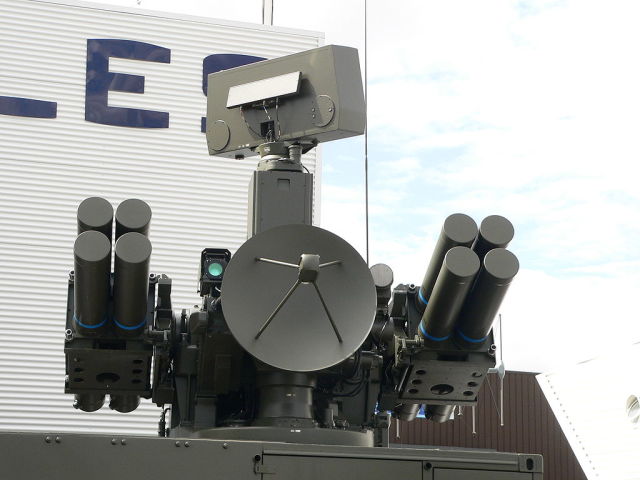TASS — about new supplies of Western weapons to Ukraine France handed over to the Armed Forces of Ukraine (AFU) anti-aircraft missile systems (SAM) Crotale ("Crotale", translated from French — "rattlesnake").
This was announced by the Minister of the Armed Forces of France Sebastian Lecornu in an interview with the newspaper Le Journal du Dimanche. The head of the French military department announced the possible transfer of SAMs back in October, giving an interview to Le Parisien newspaper, noting that France should replace these complexes with more modern Mamba SAMs ("Mamba" is the French designation of the SAMP/T complex) in its armed forces.
TASS collected information about the capabilities of the Crotale air defense system, its Russian counterparts, as well as expert comments on the impact of the novelty on the course of hostilities in Ukraine.The capabilities of the complex
According to open sources, the Crotale is an all—day, all-weather short-range air defense system designed to protect against aircraft, cruise and tactical missiles. It was developed by the French company Thomson-CSF, now - Thales ("Thales"), its production began in 1964. Since then, according to Thales, about 600 launchers of various modifications and 6,000 missiles to them have been released. In an interview, Lekornyu did not name the type of complexes transferred to Ukraine, but the media expressed the opinion that this is a variant of Crotale NG (Next Generation — "new generation"). The Crotale NG has been produced since 1990, exported to a number of countries, mounted on wheeled and tracked vehicles, and produced in a marine version for the air defense (air defense) of ships.
The launcher consists of a radar station (radar) for detecting targets with a phased array antenna, a radar for tracking targets, an optoelectronic station, eight combat-ready anti-aircraft guided missiles in launch containers, as well as control equipment on a single platform. The complex includes two launchers and a command post.
The detection radar is capable, according to open data, of detecting targets at a distance of up to 20 km and an altitude of up to 5 km. With the help of a thermal imager, the complex can detect targets at a distance of up to 19 km, on a television channel — up to 15 km. Crotale NG has a high degree of automation — for example, it independently chooses which of the channels is optimal for accompanying an aircraft. The time from target detection to firing at it is 6 seconds. The Crotale NG launcher is capable of firing at only one target at a time.
The complex uses a VT1 anti-aircraft guided missile (SAM) with radio command guidance to the target. According to the manufacturer, the most modern version of this missile system can intercept targets at a distance of over 11 km and an altitude of up to 9 km. The launch mass of the rocket is 76 kg, the high—explosive warhead with a contactless fuse weighs 13 kg, the missile can reach speeds over Mach 3.5 and hit highly maneuverable targets with overloads up to 35 G at a distance of 8 km. The rocket's high resistance to electronic interference is noted.
Russian air defense system "Tor": one in the field is a warrior
The closest in characteristics to the Crotale NG Russian anti-aircraft missile system is a family of short-range SAM "Tor". It is designed and manufactured by the Izhevsk Electromechanical Plant "Kupol" (as part of the concern of East Kazakhstan Region "Almaz-Antey"), designed to cover the first echelons of land formations from strikes of anti-radar and cruise missiles, planning aerial bombs, as well as larger aerodynamic targets and unmanned aerial vehicles, including those combined in a swarm.
The combat vehicles of the family are autonomous, contain a target detection radar, a tracking radar and 16 anti-aircraft missiles with a vertical launch. The SAM is able to automatically control the airspace and independently shoot down all targets, including those with reduced radar visibility, not identified by the "friend—foe" system. The target range is up to 15 km in range and up to 12 km in height. One of the latest modifications of the complex — the Tor-M2 air defense system — is capable of detecting and tracking more than 40 targets, simultaneously firing up to four of them, consistently firing four missiles.
In 2021, Fanil Ziyatdinov, CEO of Kupol, told TASS that the modification of the Tor-E2 could be coupled with lower—level air defense systems — SAMs, short-range anti-aircraft artillery and portable anti-aircraft missile systems - through a set of communications equipment upgraded in 2020. Ziyatdinov also noted that inexpensive small-sized short-range missiles are being developed for Thor to defeat small UAVs.
"Tor" can be mounted on a wheeled, tracked chassis with bulletproof and anti-shatter armor. "Tor-M2KM" is made in the form of an autonomous module that can even be used as a means of shipboard air defense — in 2016, this complex, fixed on the helipad of the frigate "Admiral Grigorovich" project 11356R, successfully shot down missile simulators. There is an Arctic version of the "Tor-M2DT" based on a two-link tracked conveyor DT-30.
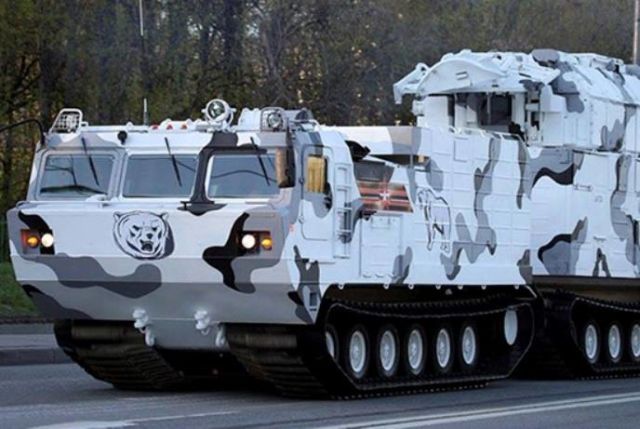 |
| SAM "TOR-M2DT". |
| Source: Ministry of Defense of the Russian Federation |
Currently, various modifications of the Tor complexes are successfully used during the special operation of the Armed Forces of the Russian Federation in Ukraine, hitting a wide range of targets — from enemy missiles to Bayraktar TB-2 (Bayraktar-TB2) attack drones of Turkish production. So, on November 24, the military department showed footage of how the Tor-M2U destroyed quite large Ukrainian reconnaissance UAVs.
"Pine": it will knock you down inexpensively
Another Russian short—range air defense system is the Sosna. It was first demonstrated at the Army-2018 international forum on the basis of the MT-LB tracked armored vehicle. The Sosny combat module can be installed on other equipment with a payload capacity of up to 3.5 tons — for example, options based on the BMP-3, BMD-4M and BTR-82A were shown.
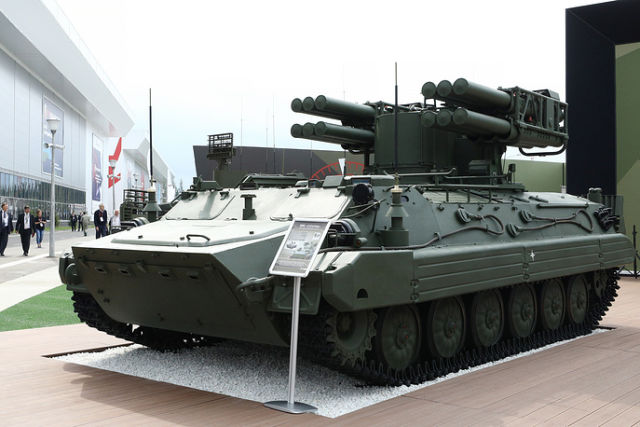 |
| Universal automatic air defense system "Sosna". |
| Source: © Mikhail Tereshchenko/TASS |
Sosna detects targets using an optoelectronic station with a thermal imager and hits them with two-stage missiles with a laser guidance system. The absence of a radar allows Sosna to avoid being hit by anti-radar missiles of the HARM type, in addition, laser beam guidance simplifies the design of an anti-aircraft missile and reduces its cost. Target range — up to 10 km, height — up to 5 km.
The SAM carries 12 anti-aircraft missiles, and a small mass of ammunition in transport and launch containers (42 kg) allows the complex to be recharged by the crew, without a transport-loading vehicle, for 10 minutes. At the same time, the second set of missiles can be placed in the landing compartment of an armored vehicle. In addition to traditional aerial targets of various types, "Pine" can hit lightly armored vehicles. Like the "Tor", the "Pine" is capable of firing in motion at speeds up to 35 km/h.
The influence of Crotale on the special operation
Russian military experts express doubt that the supply of another air defense system to Ukraine will be able to protect the country from Russian strikes with precision weapons on military and energy infrastructure facilities or will significantly affect the course of hostilities.
"This is an analogue of our "Thor". Only "Thor" is more perfect. By the way, the Crotale's guidance system is also command-based, like the "Thor". The ["Tor"] complex has been fighting for a long time and has a high accuracy of destruction — up to a direct hit of a missile on target, and "Tor" can shoot in motion, Crotale is not capable of this. In 2020, there was a drone raid on a Saudi enterprise, and neither the [American air defense systems] Patriot worked, nor the Crotale. Crotale should have worked 100%, especially since France was refining them specifically for Saudi Arabia," said Yuri Knutov, a military expert and historian, director of the Air defense Museum, in an interview with the Izvestia newspaper.
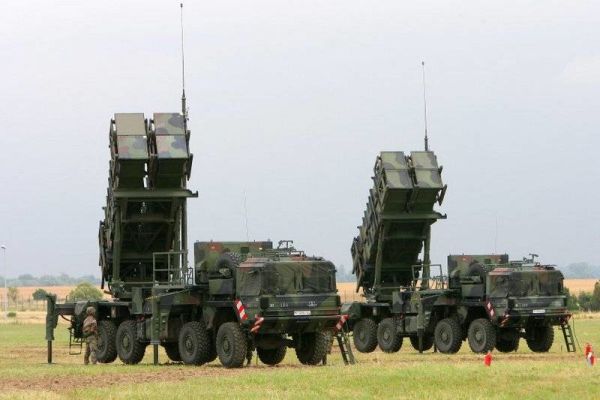 |
| Patriot air defense system. |
| Source: http://www.globallookpress.com/ |
According to open sources, Riyadh is one of the largest operators of the Crotale air defense system - the country's ground forces, the air defense of the air force and warships have them.
The expert believes that the effectiveness of this French air defense system will be insufficient to defeat UAVs and cruise missiles. "These complexes were created [for shooting] at targets that are made entirely of aluminum and have a metal body and a highly reflective surface. Now all modern targets are made of composite materials, they are hardly noticeable. Even significant improvements are unlikely to help," Knutov said.
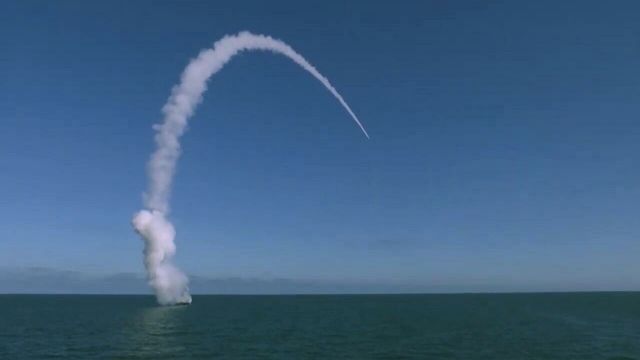 |
| Launch of the Kalibr high-precision cruise missile during the Grom-2019 exercises. |
| Source: Ministry of Defense of the Russian Federation |
The same opinion is shared by TASS military columnist Vladimir Karnozov. "Will it bring down (the Crotale system — approx. TASS) our Kalibr cruise missile — there are big doubts that it is capable of doing this at all," he said, recalling that it is unknown what kind of modification of the SAM France is going to "give" to Ukraine. "So far, the supplies that we see from European countries, NATO countries, are a terrible mix there. They supply both the latest weapons systems and very old ones, from the 1950s. <...> If this is a Crotale that goes out of production, then this is a serious thing, you can't underestimate its significance. And if it comes from old army reserves, then they will not be able to do anything with the help of this system practically, it is already very outdated," Karnozov believes.
He also drew attention to the fact that the air defense systems supplied to Kiev are not integrated into a single control system. "It is very important to have a so—called air defense automated control system - an automated control system for these air defense systems. There are them in Ukraine, but they are old, still Soviet-style. There were no reports of any of their upgrades or the arrival of new ones," Karnozov said. "This has a very serious impact on the combat capability of the country's air defense. In this sense, Crotale will give practically nothing," the military expert added.
Prepared by Viktor Bodrov, Georgy Sultanov
